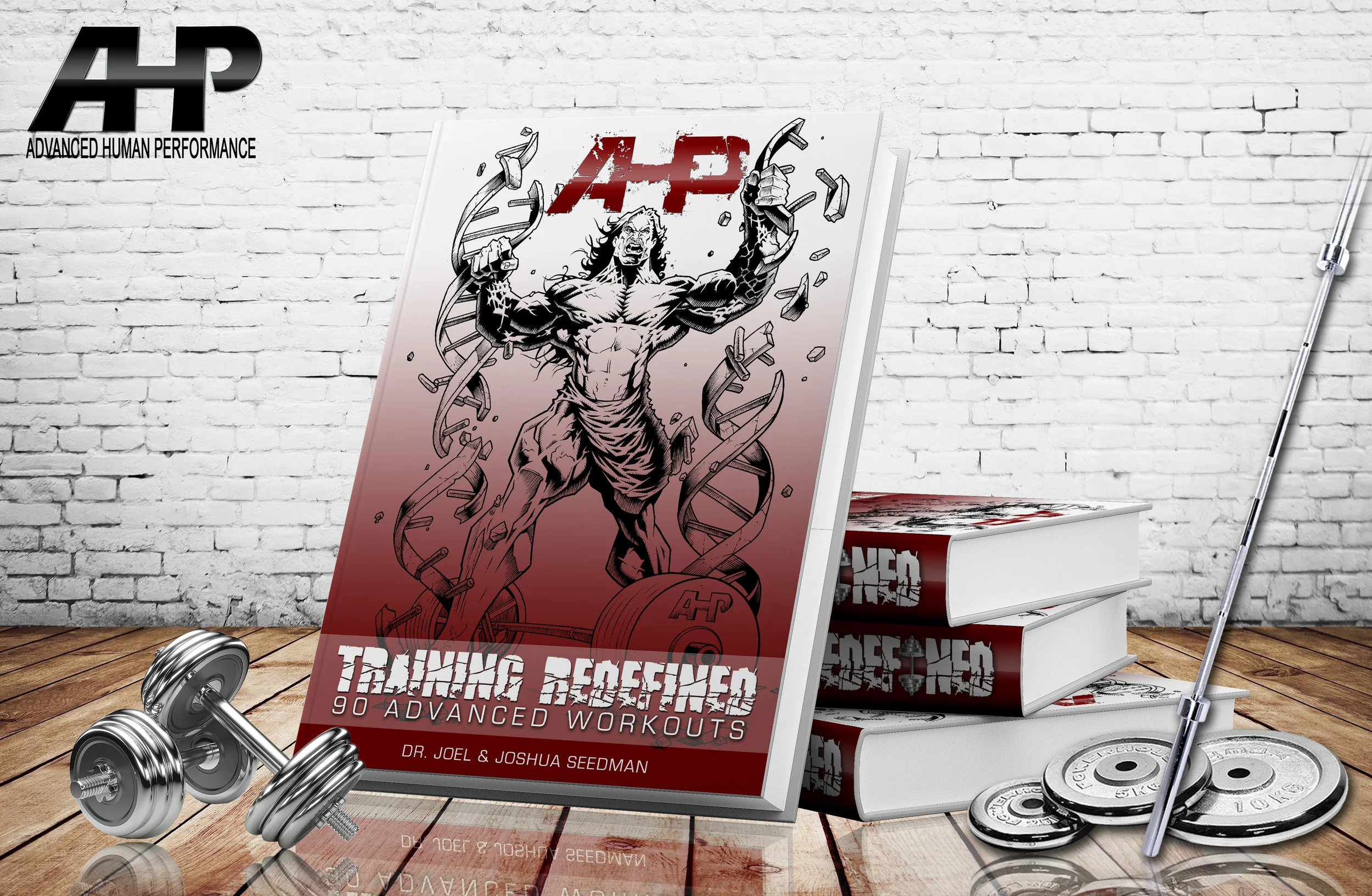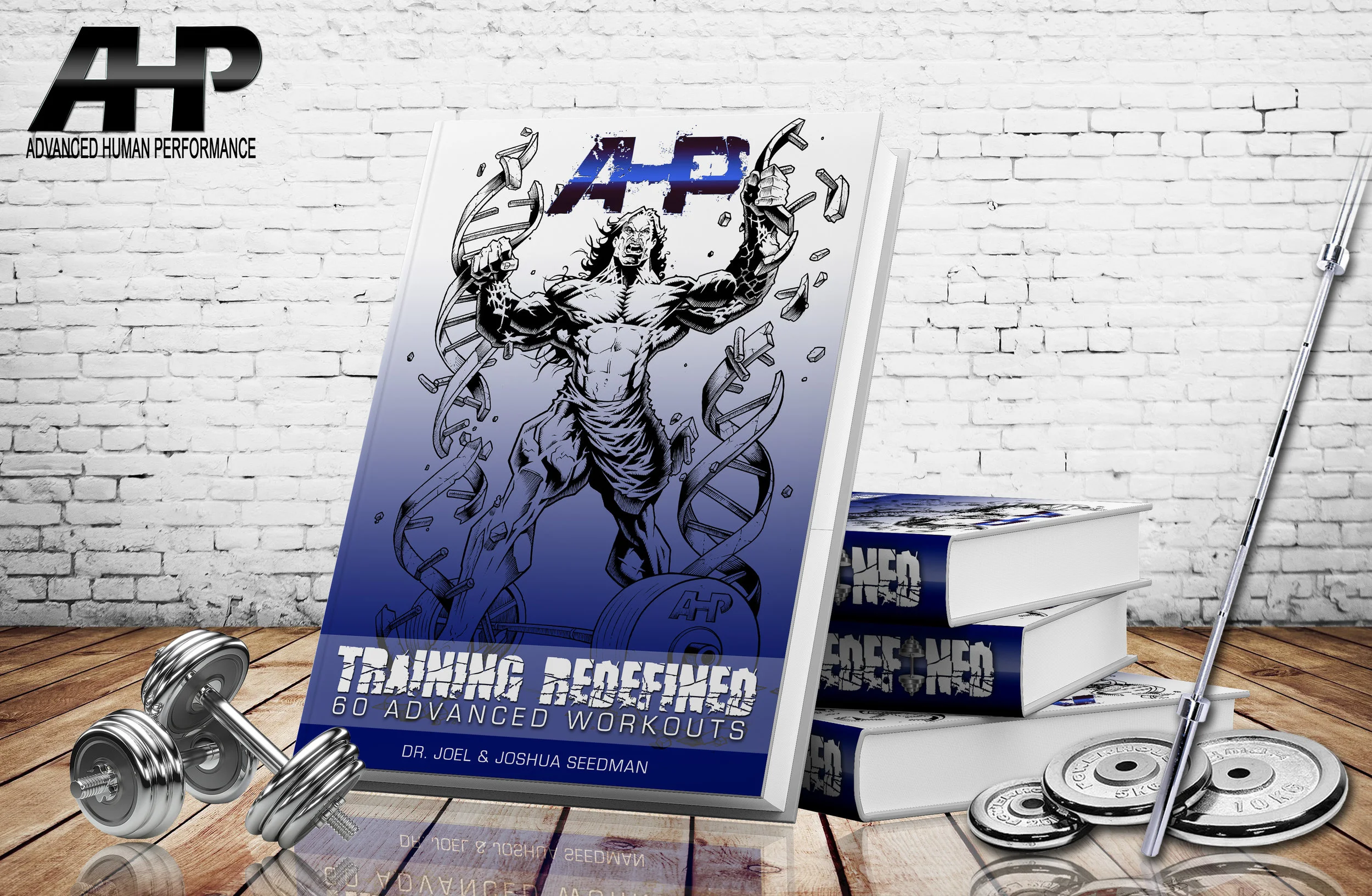Use Offset Dumbbell Training for Strength, Size, and Muscle Function
Dr. Joel Seedman, Ph.D.
I’m a big fan of utilizing unique training protocols to clean up body mechanics and form. One that I’m particularly fond of is the offset training technique. This can be performed with barbells, kettlebells, dumbbells, cables, bands, and even bodyweight. It simply involves loading more weight on one side of the body and less on the other. Although each variation has its own unique characteristics the dumbbell variation is very user friendly and simple yet incredibly effective. Here are several of my awesome clients including Matt Jordan, Ben Lai, and Leslie Petch showing how it’s done.
Here are 10 reasons why offset dumbbell training is so effective.
1. If you’re looking for a method that not only works the primary muscles for that movement but also crushes the core, look no further than offset dumbbell training. In fact you’re essentially resisting rotation and lateral flexion throughout each movement making it incredibly effective for hitting all of the spinal stabilizers and core musculature. Think of it as a combination Pallof press performed in conjunction with any movement you’re doing.
2. Offset dumbbell training is highly effective for eliminating momentum and jerky mechanics as it requires the lifter to lift the weights smoothly and in a very controlled manner without wiggling or shifting. That’s because it forces the lifter to synchronize the movement so that both sides (the heavy and light loads) move in unison rather than out of synch with each other. Besides improving mechanics this also places more tension on the targeted muscles making it highly effective for hypertrophy training.
3. One of my favorite features of the offset dumbbell training method is how it teaches the lifter to stay tight by increasing intramuscular tension throughout the entire body. In fact this method helps promote concurrent activation and irradiation (increased neural drive from staying tight) which helps eliminate energy leaks and clean up form. Once you go back to standard loading don’t be surprised if your strength goes up.
4. The offset dumbbell loading helps to eliminate collapsing and excessive range of motion as the increased full body tension helps promote strong 90-degree angles rather than excessive ROM commonly seen in lifters. Even the slightest collapse on any movement will cause the lifter to lose control of the movement typically causing the body to twist or laterally flex.
5. This technique also eliminates asymmetry issues as it forces the weaker side to catch up to the stronger side. In fact, if one side is even slightly weaker it will be immediately exposed. This is one of the single most effective methods I’ve ever used for correcting side to side imbalances and asymmetries.
6. If you’re looking for a technique that literally helps clean up form almost immediately the offset dumbbell loading is it. The combination of core stabilization, full body tension, and greater motor control causes the lifter to clean up their body mechanics within seconds in order to successfully complete the lift.
7. The offset dumbbell loading is very physically demanding to the point that most clients will feel their lungs and conditioning as much as their muscles. If you’re looking for a strength training method that improves conditioning as well as strength this one fits the bill.
8. The offset dumbbell loading method is highly versatile and can be performed on any dumbbell exercise including chest presses, squats, lunges, hinges, overhead presses, rows, pullovers, curls, skull crushers, shoulder raises, and more.
9. Another important feature I appreciate regarding offset dumbbell loading is how much it improves coordination and motor control. Because one side will have a tendency to lag behind the other it almost feels as though each dumbbell has a mind of it’s own. The degree of mental concentration and motor control required to keep the movement smooth and moving in one seamless motion is significant to say the least.
10. If you’re in need of a training method that crushes the muscles while minimizing total loading, joint tension, and muscle damage the offset dumbbell method is it. Because you won’t be able to handle quite as heavy a loading as you typically would (I recommend you handle 80% of your typical loading for the heavier side) it allows increased training intensity and activation but with decreased soreness and less demands on recovery. This also allows the individual to train more frequently yet still with a relatively high intensity.
Why Not Just Do Standard Single Arm Variations??
The offset version requires greater motor control and movement coordination in comparison to standard single arm variations as you're forced to synchronize two different loads that want to move at two entirely different speeds. As a result this usually forces the lifter to slow things down to make this synchronized timing occur which ends up placing even greater tension on the muscles. The offset variation also requires more tightness and full body tension than just about any training method including single arm variations.
Training Protocols
I typically recommend using 2-4 sets of 3-5 repetitions (per side) for each set when using the offset dumbbell loading. In addition the heavier side should range between 2-3x as heavy as the lighter side. The larger the variance between sides the greater the difficulty of the movement. In addition I suggest using this protocol once every several weeks in your training program.
Advanced Technique with Double Offset Loading
Here I have 2 of my MBL pro baseball players Austin Meadows and Parker Meadows performing a unique double offset protocol I periodically employ. Besides blasting the core it has 3 benefits
1. It allows the lifter to train both their grip and prime movers at the same time without sacrificing overload to the primary muscles. For instance Austin is using a 80 lb dumbbell and 30 lb Kettlebell for the press.
2. One of the drawbacks many lifters complain about in regards to both bottoms up presses and pinch grip exercises (i.e. hex pinch dumbbell rows) is that they tend to be too light to produce an adequate strength & hypertrophy stimulus in the primary movers. Even if you are fairly efficient at bottoms up movements or pinch grip exercises you’ll most likely only be taking advantage of only 2 mechanisms of muscle hypertrophy namely mechanical tension and metabolic stress. Simply put you’ll be missing out on the third and arguable one of the most important mechanisms namely muscle damage and micro-trauma as the loads are typically too light to trigger this. However this dilemma is quickly resolved with the double offset method as the lifter can reap the benefits associated with bottoms up and pinch grip movements while simultaneously triggering a significant hypertrophy stimulus with traditional heavy dumbbell loading.
3. Helps with motor control and neuromuscular efficiency. While one arm is essentially performing a relatively standard overload movement, the other arm is performing a lighter technique drill. The goal is to transfer the same crisp and proper mechanics produced from the bottoms-up or pinch grip technique to the arm that’s simultaneously moving the heavier dumbbell on the opposite side. Once mastered, the movement should appear seamless & synchronized as if you were using the same tools and loads on each side with no visible differences in body position and mechanics. This requires incredible neuromuscular coordination, body awareness, proprioception, sensory integrated movement, and mental engagement.
Bonus: Offset Leverage Landmine Deadlift
Weak Core Activation and lack of spinal rigidity are two very common problems I see on deadlifts and other axial loaded movements. While a number of offset protocols can be used to improve these issues such as shown above, here’s a unique variation I refer to as an offset leverage landmine deadlift. Also big shoutout to my client and bodybuilder Ben Lai who’s performing it in this video as he’s equally as responsible for coming up with this one as I am.
Although a variety of deadlift setups can be used for this variation I’ve found conventional deadlift positioning to be ideal for this method. Just be prepared to brace your core like never before. You’ll also feel one side of the body working more than the other which further helps eliminate imbalance and symmetrical loading issues.
Don’t be surprised if one side is more challenging than the other. This simply indicates an imbalance that needs to be addressed for which this movement is very effective at targeting. I recommend performing several sets of 3-5 reps per side while taking your time between reps to ensure proper setup and body positioning on every repetition. You may also want to superset these with single arm planks to help fire up the various stabilizers and musculature around the core and hips that you’ll inevitably need to recruit on these.
If you’re looking for a training program and instructional guide that teaches you how to incorporate different movements such as these into your training routine, check out my Complete Templates Series.






























